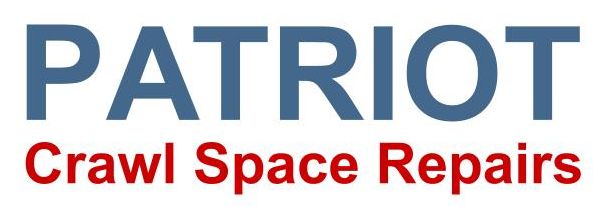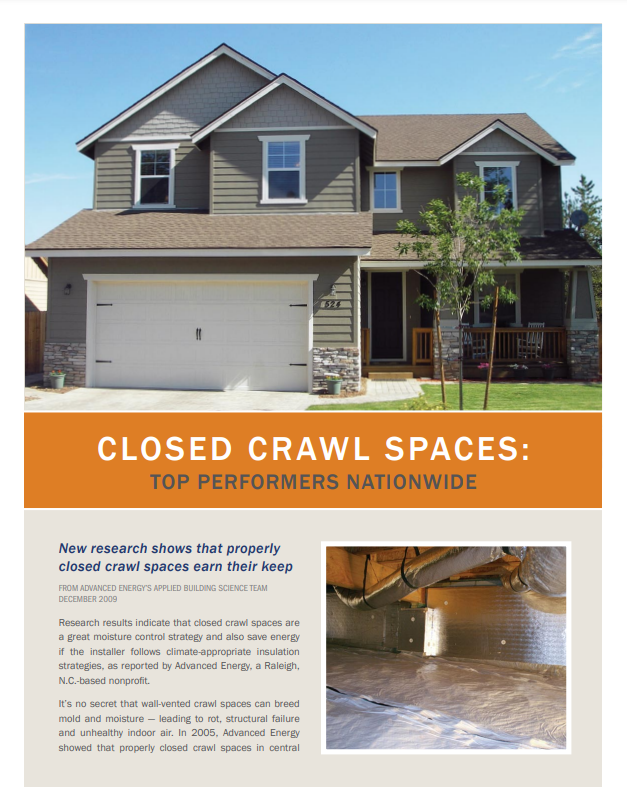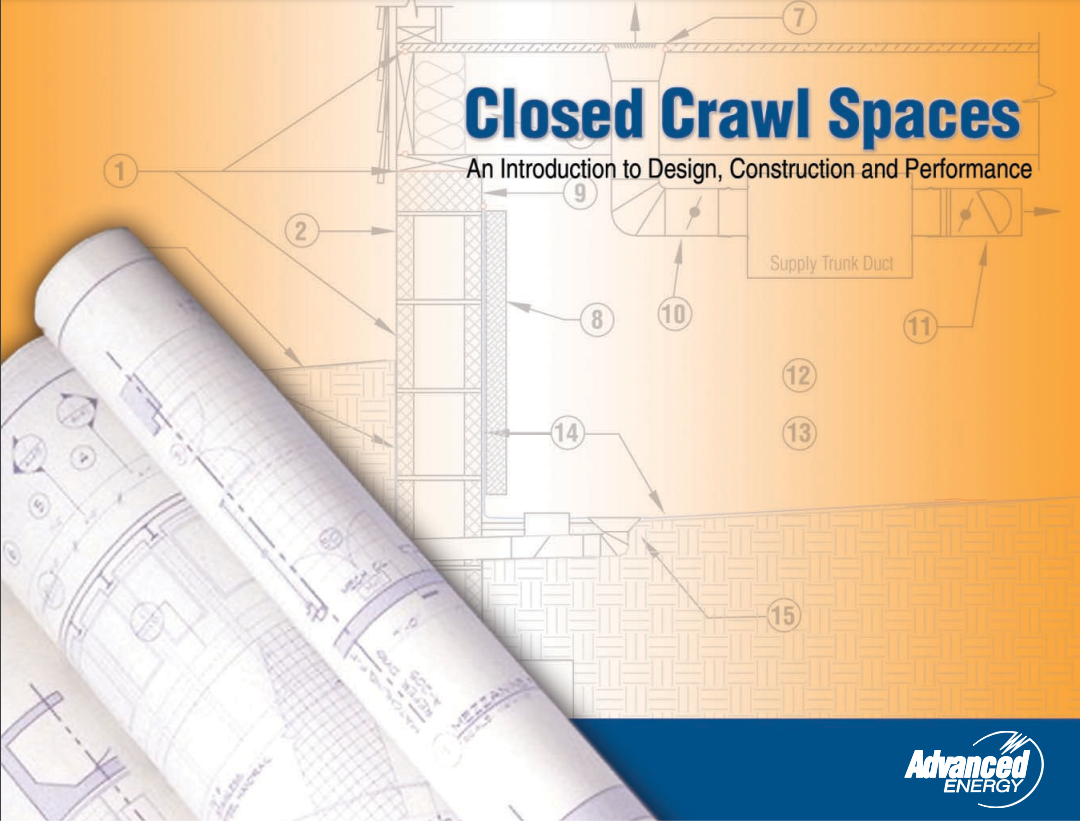Hampton Roads Crawl Space Encapsulation
Crawl space encapsulation is a proven way to keep your crawl space dry, mold free, and prevent foundation wood damage. We provide encapsulation packages for various budgets and proudly serve Hampton Roads.
Why Is Crawl Space
Encapsulation Important?
In Southeast Virginia we have very hot and humid Summers, and traditional vented crawl spaces allow hot humid air to mingle with the cool air from the home, causing condensation in the crawl space. This leads to mold, fungus, and wood rot.
Encapsulation is simply sealing the crawl space vents, and providing mechanical ventilation in the form of a dehumidifier, or conditioned air. This stops the condensation and the resulting mold and fungus damage.
Steps To Encapsulating
A Crawl Space
To encapsulate a crawl space we first remove any contaminated insulation and the old vapor barrier. We then clean any mold and fungus from the wood. Next we make any needed repairs, and install electrical wiring for the dehumidifier and sump pump if there is one included.
If a drain and sump pump are needed we install that system next. After that we seal the crawl space vents and openings, install a heavy grade vapor barrier, and install the dehumidifier along with any needed accessories.
Full Encapsulation Vs.
Hybrid Encapsulation
A full encapsulation is one where the vapor barrier is sealed around all foundation piers and sealed to the foundation walls, while a hybrid encapsulation has a vapor barrier that is pinned to the ground. Both have sealed crawl space vents and mechanical ventilation, such as a dehumidifier or conditioned air supply.
Full encapsulation is a lot more expensive, but is necessary in some cases to prevent outdoor air or water intrusion, while a hybrid encapsulation will do the job of keeping the space dry in most cases. The choice comes down to how much the homeowner wants to spend, and what the needs of the home dictate.
Frequently Asked Questions
What is the cost difference between Full and Hybrid Encapsulation?
Habrid encapsulation typically costs $8,000 to $12,000, and full encapsulation typically costs $14,000 to $20,000.
Which solution is right for you depends on moisture issues present at your home, as well as your budget.
One isn't necessarily better than the other. Full encapsulation is used when there are heightened groundwater and wall seal concerns, and an extended vapor barrier envelope is needed.
Every house is a little different so it is best to weigh the options for your home. We will provide you with pricing options once we have inspected your home.
Are there savings or tax credits?
Yes. Encapsulations eligible for a $1,200 tax credit under the 2022 Inflation Reduction Act home air sealing and insulation clause.
You may also save on your energy bills by sealing your crawl space vents, sealing ductwork, or adding insulation.
Do all encapsulations need a sump pump?
We require at least a sump pump in our full encapsulations because we don't want it to turn into a pool if you have a leake or flooding.
Hybrid encapsulations only need a sump pump if there is eveidence of water intrusion.
When there is evidence of water intrusion we typically recommend a perimeter drain and sump pump system. Water against your foundation walls is a serious threat to the structure going forward.
Why do we install a crawl space exhaust fan?
At around $300, a crawl space exhaust fan is dollar for dollar the best investment in our encapsulation system for several reasons.
1. The EPA recommends exhaust in all sealed crawl spaces. The reason for this is that even thoug the space is sealed, rodents, bugs, spiders, etc. can still get into the space at times. Water can puddle and form mold. An exhaust fan ensures that any comtaminated air is directed out of the space vs. flowing to the first floor of your home.
2. A crawl space exhaust fan helps circulate air from your dehumidifier. Since your dehumidifier sits in one spot, "dead spots" can occur at the far corners of your crawl space. The exhaust fan makes sure that the air flows through the entire crawl space.
3. The exhaust fan provides a great backup to your dehumidifier, creating negative pressure, where a small amount of household air is pulled into the crawl space, and out through the exhaust, helping to condition and dehumidify the space should your dehumidifier go out.
Do I need to do structural repairs before encapsulation?
Yes. If there are structural or wood repairs needed in your crawl space, you need to do those first. The reaons is that once you encapsulate the crawl space, it is likely to damage the vapor barrier if you conduct heavy repairs in the future, which will increase your cost.
Do I need to add crawl space insulation?
Once your crawl space is sealed, it will have roughly the same energy efficiency as a vented crawl space with floor insulation, even though you have removed the insulation.
Adding in wall insulation increases the energy efficiency of the home, but most homeowners say their floors and water are warmer in the winter and cooler in the summer once the vents and access holes are sealed without insulation.
Can I keep my existing floor insulation?
If you have a relatively clean crawl space or a newer home, you can keep the insulation.
If the insulation is moldy and damaged, or if you have widespread mold and fungus on the wood, it needs to come out.
Will a vapor barrier alone solve moisture issues?
No. A vapor barrier only helps keep ground moisture from migrating up toward the wood, but in our humid Virginia climate, condensation from hot summer air is the biggest moisture concern. A vapor barrier won't help with this, which is why we recommend sealing the vents and insalling a dehumidifier.
Do I need full encapsulation to comply with building codes?
There is a major difference between new construction building codes, and existing building codes.
In existing homes, crawl space work is only required to improve the situation in the space. In addition, if mechanical ventilation is provided via an exhaust fan, the space is not considered a sealed crawl space, it is still vented.
These nuances allow for full or hybrid crawl space encapsulation, while still being code compliant.
Whether you opt for full or hybrid encapsulation really depends on the moisture issues you are facing. We can help you determine a plan that is best for your home.
Do you have other upgrades available?
Yes. Upgrades may include battery backups for sump pumps, dimpled drain mats under the vapor barrier, wall board insulation, fans, etc. We will recomend a plan that best fits your home and budget.
Do I need a service plan?
Once you have encapsulated your crawl space and installed a dehumidifier, we recommend servicing the dehumidifier twice per year. You can either do that yourself, or have us do it.
Service plans are required for full warranty benefits to apply.
What type of warranty do you provide?
All warranties require a service plan. There are factory warranties on dehumidifiers and sump pumps.
We provide a 5 year warranty on dehumidifiers, condensate pumps, lights, fans, and sump pumps if you are on a service plan.
We provide a 15 year warranty on full encapsulation vapor barriers, so long as you are on a service plan. This warranty does not cover damage from sharp objects, dirt getting in from the door being left open, plumbing leaks, or catastrophic flooding, but if you have tape come loose or the vapor barrier malfunctions, we will take care of it.
All drain systems have a 20 year warranty with a continued service plan.
Structural repairs including piers, helicals, and wood repairs come with a 25 year material warranty, excluding natural disaster, flood damage, and wood damage due to leaks or lack of proper moisture control.
Proper moisture control includes encapsulation and dehumidifier on a service plan for crawl space wood, and a frech drain and sump pump if the crawl space is below grade or flood prone.
In Depth Research Publications




